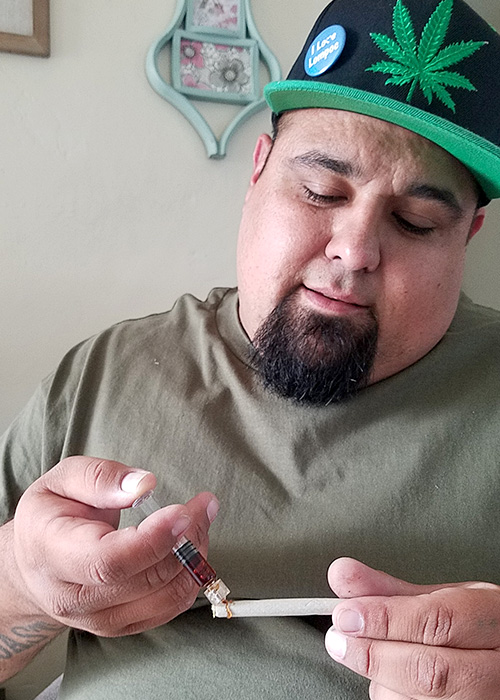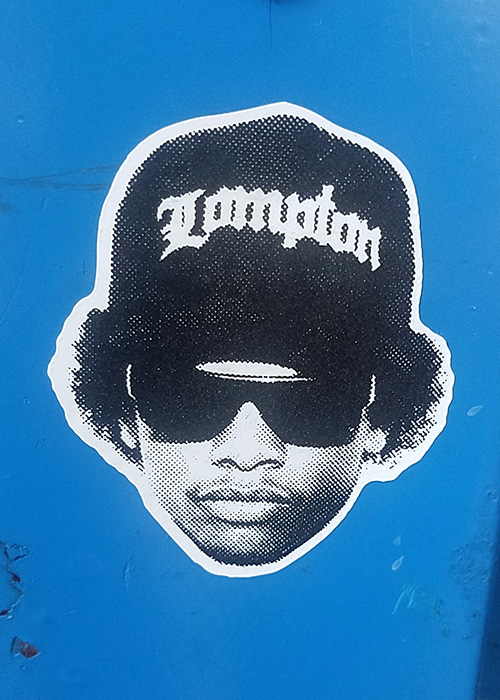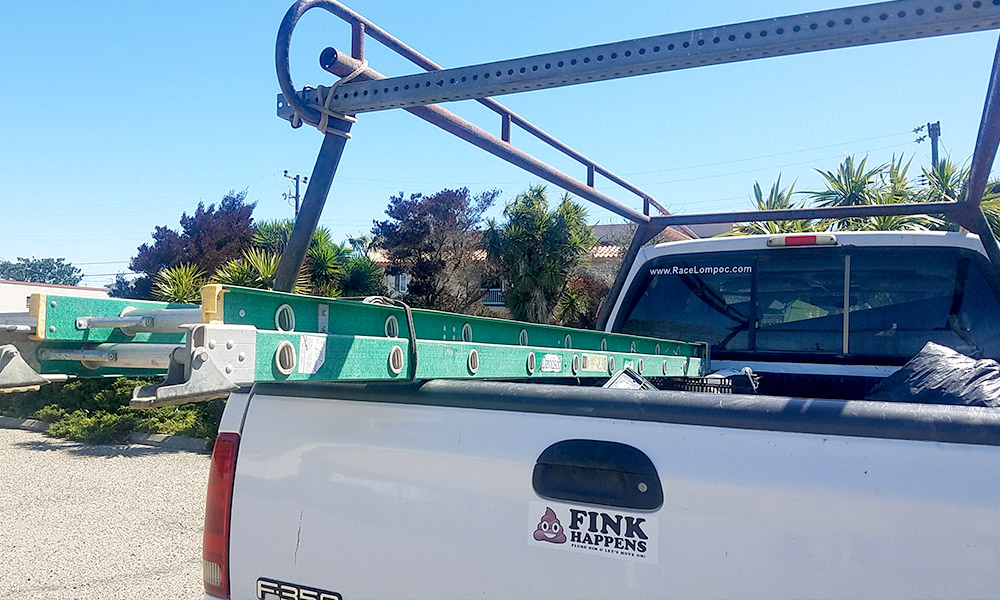Lompoc, California: The ‘Free Market’ Cannabis Plan to Reshape a Small Town’s Economy
Lompoc is one of the only cities in California proposing no caps on cannabis licenses and no local taxes on cannabis products, but an opposition movement wants to do away with the plan entirely. The small, formerly anti-marijuana Central Coast city is a perfect case study in “free market” cannabis legalization. Lompoc native Angela Bacca traveled home to get the full story.
In 2007, when the economic collapse arrived hand-in-hand with the start of the marijuana Green Rush in America, a narrative about cannabis legalization emerged: Cannabis can reshape and revive economies. This narrative is true, but it’s also worth considering how cannabis can reshape a local economy. For the most part, as legalization has spread, it’s been followed by reefer madness-style arguments that support the establishment of exclusive oligopolies for the wealthy to control the cannabis industry. But maybe not in my hometown — Lompoc, California — which was one of the last parts of the state I would ever expect to become the “free market” epicenter of California legalization.
Although the city — and most of the Central Coast between Los Angeles and Santa Cruz — has effectively banned cannabis activities since the state legalized medical marijuana in 1996, the city is now in the process of rolling out what its proponents on the Lompoc City Council are calling a “free market plan.” Lompoc will simply pass regulations in lockstep with state requirements and nothing more, with all license types allowed (including social consumption lounges), no caps on licensing and no additional taxes levied by the city. However, these pro-cannabis advocates will have to face down a formidable opposition — including the city’s mayor and the local police — in order to achieve their goal of restoring the local economy.
Lompoc’s Economic Struggles
If you, like me, are really familiar with Lompoc, then it’s surprising to see the city take this approach to legal cannabis. Lompoc is an odd little town on the Pacific Coast Highway with no easy connection to a major interstate. Because most of the areas around the town are either owned by the federal government or private landowners, it is isolated by the ocean to the west and at least 20-30 miles in all directions of undeveloped or agricultural land. Despite its incredible natural beauty, the isolation, poverty and effects of living in the shadow of the city of Santa Barbara (also the county seat) have left the city underdeveloped, pushed its residents to commute for employment and left all us Lompocians with a massive inferiority complex.
How could we not have one? Lompoc has been treated as Santa Barbara’s “trash can” for years. When I was a kid, I was ashamed to tell people I was from Lompoc and opted instead to tell people I was “really from Orange County,” where I was born and most of my extended family lives.
It is regrettable that I and others were or are so ashamed. Lompoc is one of the most beautiful hidden valleys on the Pacific coast and it has a unique and temperate microclimate that makes it an incredible place to grow a wide range of crops. In 1964, Lompoc was supplying 70 percent of the world’s flower seed stock, earning it the designation of “Flower Seed Capital of the World.” In 1985, the town was surrounded by 1,500 acres of flowers earning it the nickname “The Valley of the Flowers.”
But the flower business has shrunk considerably since then. Most of the economy is now based on federal government employment: the space and air force programs out of Vandenberg Air Force Base (and now SpaceX) and Lompoc Federal Prison. Throughout Lompoc’s weird and storied history, it always seemed to be on the verge of something better but unable to achieve it, plunging it in and out of recession. When the economy collapsed in 2007, it got even worse.
But now, thanks to California’s new cannabis legalization, there is a contingency in Lompoc’s city council looking to improve the city’s economic future through free market legal cannabis. I went down to Lompoc last month to learn more.
Lompoc’s Medical Ban Switches to Adult-Use Approval
Like a lot of the more conservative parts of Southern California, everyone in Lompoc was always smoking a ton of weed and nobody was talking about it — or when they did talk about it, the message was negative. When medical marijuana became state law in 1996, most of the counties between San Francisco and Los Angeles enacted bans on commercial cannabis activities and personal cultivation.
Lompoc was one of those places. For the last 20 years, patients in Lompoc who chose to use medical marijuana legally under state law either had to break the local law and grow their own, order from an unlicensed delivery service or drive between two and five hours away to a brick-and-mortar dispensary in one of the big California cities.
But as Lompoc’s economic misfortune increased, its politicians started to embrace the adult-use cannabis market.
In 2016, City Councilwoman Jenelle Osborne, former head of the city’s Economic Development Committee, campaigned on bringing cannabis businesses to Lompoc. But, when Prop 64 passed in the same election, the city council was presented a plan supported by the mayor and police chief that would restrict the industry almost out of existence. Members of the community spoke out only against it (none in favor) and ultimately it was voted down by all but Mayor Bob Lingl. After the restrictive ordinance was shot down, Osborne and councilman Victor Vega created an “ad hoc” committee to review Prop 64 and propose a plan for Lompoc. In June 2017, Vega and Osborne presented a plan that suggested “minimal oversight”, designed around creating local business incentives. In October, Lompoc’s “free market plan”, Ordinance 1640 was introduced, which would make Lompoc one of the only cities in California proposing “no caps, no taxes.”
A week after the ordinance was introduced, the opposition showed itself: the local police, the mayor, a local pastor and other members of city hall organized loosely as Drug Safe Lompoc. However, Ordinance 1640 passed by one vote in city council in early November. By December, Mayor Lingl was leading efforts to place a referendum on the spring 2018 ballot to block it.
This is when I first got involved and met Joe Garcia, in December of 2017. I saw online that Garcia was threatening to organize citizens to recall the mayor because of his attacks on the ordinance. I reached out, introduced myself as a cannabis journalist and activist, and asked how I could help. Garcia and I worked together from afar to devise a media strategy to make sure the ordinance didn’t go down quietly and not without exposing what we felt were unethical and potentially criminal tactics being used by our powerful opposition.
But then, when the city council reconvened in January 2018, we learned the mayor failed to achieve the 1,000 required signatures to place the referendum on the ballot. After the cannabis rollout was cleared to proceed, a group led by councilmen Vega and Jim Mosby then pushed for the city to refrain from adding additional taxes on top of the state’s already heavy tax scheme and instead using application fees to cover the costs of processing to the city. But, because of significant pushback from other council members (including Mayor Lingl), city cannabis taxes will now be presented to Lompoc voters this fall.
From Lompton to Lompocsterdam
Lompoc really has gotten a bad rap for a long time and it has long been plagued by drug epidemics and other poverty-related effects. Growing up in Lompoc, kids from nearby cities like Santa Maria and Santa Barbara often mocked our little town with the nickname “Lompton,” an off-base comparison to the violence and poverty on the nightly news coming out of the city of Compton in South Central Los Angeles.
“We are going to turn Lompton into Lompocsterdam,” Joe Garcia told me, as he lined the top rim of a freshly-rolled joint with some distillate, exposing a large tattoo across his right forearm that reads “CENTRAL COAST.”
This April, I finally got to meet Garcia in person. He is out and proud about his cannabis lifestyle. He loves this plant and his California home: he married his husband Elias on April 20 and the two recently took a trip up the coast to 420 festivities in San Francisco for their anniversary.
As we passed the joint, Garcia filled me in on the drama that had been unfolding in our little town and his dreams of “Lompocsterdam.” Garcia and his family moved to the Los Angeles area when he was in high school, where he attended college. He had no intentions of coming back to Lompoc until 2015 when he learned his father, Joe Garcia Sr., had been diagnosed with cancer and probably had less than six months left to live. In January 2016, he moved home to care for his father.
Garcia started feeding his father concentrated full extract cannabis oil (FECO aka RSO) and his cancer went into remission. Garcia’s father is not only still alive today, he also brought over his e-nail and shared some fresh Lemon Haze shatter with me. He is a native Lompocian, and says, like much of the town, he has always smoked cannabis, but he credits the oil his son brought to him with saving his life.
Garcia’s experience with his father pushed him to become more active in Lompoc politics, and I am grateful he did.
Garcia has served as a watchdog to the shenanigans the opposition has tried to pull to block the rollout of Ordinance 1640.
“We voted for this, it happened. The city has no business going against the Prop 64 vote,” Garcia said, pointing out that nearly 60 percent of Lompoc voted in favor of the state law.
When I first met Garcia, we were gearing up to fight the ban, but when it was overturned, there wasn’t so much anything to fight against as there was something to fight for: making sure legal cannabis truly benefited the community, not just outside big businesses. I warned him that, because of my work as an investigative journalist covering commercial cannabis rollouts in places like Ohio and Florida, I knew the community would have to stay vigilant.
The night we met, Garcia was preparing to take the organization he had formed to fight the mayor, The Lompoc Valley Cannabis Coalition for Safe Access, and turn it into a business association with the help of fellow advocate and U.S. Marine Corps veteran Matt Dula: The Lompoc Valley Cannabis Coalition.
Dula and Garcia hosted the first exploratory meeting that night at our local library to a packed audience. Anxiety was high in the local cannabis growing community. Of all the counties in California to stack up legal cannabis growing licenses, it is not the Emerald Triangle that boasts the most, but instead Santa Barbara County, with most of the licenses concentrated around the flower-growing cities of Lompoc and Carpinteria.
Some in the audience were longtime growers worried about getting steamrolled by the big businesses that were stacking the licenses. Some in the audience were representatives of those license stackers. Dula and Garcia opted to keep annual membership fees for the Lompoc Valley Cannabis Coalition at just $15 in hopes of bringing in more of the local community. Dula says at last count, however, almost all the memberships purchased were by the license holders.
Lompoc vs. Santa Barbara County
Councilman Jim Mosby is perhaps an unlikely ally to the cannabis industry. He doesn’t use the plant or really care about it, but he sees cannabis as central to the town’s economic future. He leans libertarian in his political views and has advocated heavily for the “free market plan.” Mosby was and still is adamant that Lompoc cannabis should remain tax-free, to the chagrin of his colleagues in Lompoc City Hall, who want their cut.
“It’s economics 101 — if you want to put something out of business, tax it,” Mosby said. “Any tax is a short-term fix. Look outside the walls, people are struggling in this town. We need to fix the whole town, and if we fix the whole town then City Hall will fix itself.”
Mosby points to the 26 empty storefronts along Ocean Ave, one of the busiest streets in town. The city hired a consultant to recommend taxes, but Mosby, Vega and others on city council instead advocated for licensing fees that covered the cost to the city of processing — about $11,000 — and nothing more.
Most of the Lompoc community is not actually in Lompoc, but in unincorporated Santa Barbara County just outside it. Mosby points to the county licensing so many grows as to why Lompoc had to take this path.
“You guys [the county] did this to us,” says Mosby. “If you had no grows in the county, it would be difficult for us to embrace [cannabis] the way we have. But the fact of the matter is you surrounded us by grows, it would be insane of us not to embrace it.”
Mosby says he supported Lompoc’s cannabis embrace for a few reasons; he read Prop 64, twice, and his main takeaway was the spirit of the law was to reduce black market activity and stop prosecuting cannabis crimes. He liked the purpose of Prop 64 and he liked the economic potential behind the law, especially because the legislation also had language against business monopolies, which he took to heart.
Mosby estimates Lompoc will add anywhere from 500 to 1,000 jobs directly from the cannabis industry, but perhaps thousands more based on ancillary businesses, and particularly tourism. The region’s wine growers have experienced a tourism boom since they were featured in the 2004 wine-tasting themed feature film “Sideways.” A new five-story hotel (now the tallest building in town), wine and art galleries and a farm-to-table restaurant have popped up since then. A run-down warehouse district on the east side of town is now a tourist destination called “The Wine Ghetto,” as wine insiders from around the world flock there to try reserve wines from the local wineries’ industrial showrooms. Mosby believes legal cannabis will bring in more tourism the way wine has and he hopes that it keeps more Lompocians and their money in Lompoc.
Mosby points to the effects of the regional economy on Lompoc. The City has a deficit of about 10,000 jobs compared to the population. Nearby Santa Barbara, where rent and property values are sometimes more than triple that of Lompoc, has a surplus of 20,000 jobs, mostly low-wage, filled by commuters who drive about an hour each way over Highway 1 into Santa Barbara daily to work as gardeners, maids, in-home care assistants, food servers and administrative office workers.
With no caps and no taxes on legal cannabis, Lompoc has the ability to become an actual tourist destination. As a Lompocian, it makes me giddy to think that tourists in the future may land at Los Angeles International Airport and drive right through Santa Barbara with the actual intent of spending their time in Lompoc, in our little Valley of the Flowers.
But Mosby warns against the powerful history of economic destruction in the town rearing its ugly head again.
“There’s been this up and down, up and down, up and down. One of the biggest concerns for this community is the jobs-housing imbalance and the fact is, right now, if you have a job in Lompoc, there is a 60 percent chance you commute to that job,” Mosby says. “When you’re gone, you’re gone. You’re spending money out of town.”
Most of the workers are going to Santa Barbara, Santa Maria and the nearby Chumash Indian Casino in Santa Ynez. Mosby shows me figures in historical books he has been reviewing to back up his claims. In 1990, only 40 percent of Lompoc was commuting, now that number is 60. The median income has declined and growth has stagnated for the better part of the last 40 years.
“As you make a community more desperate, you can control them easier,” Mosby warns.
Inside the Opposition
In the face of this free-market cannabis plan, Mayor Bob Lingl and a tight circle around him have been fighting tooth and nail. One of the main opponents is Pastor Bernie Federmann of the Lompoc Foursquare Church. Oddly enough, the church is right across the street from Mosby’s office, in The Mosby Building, an old medical office and atrium that was once home to his father and uncles’ dental practices. The two have fought contentiously over cannabis and a shared parking lot Mosby owns.
But no one in the opposition is as vocal as city planning commissioner Ron Fink. Fink has been submitting ongoing letters to the editor to local press on a range of topics for over a decade. In particular though, Fink’s anti-cannabis op-eds are vitriolic and fear-mongering. I know firsthand. Last December, Fink and I engaged in dueling op-eds in the Santa Maria Sun during the mayor’s campaign to block the ordinance. Fink particularly hates Mosby, and the two have ensued in a bit of a back-and-forth over a bumper sticker on Mosby’s truck.
“Fink is a terd,” Mosby says. Mosby takes me to the parking lot to see his sticker, now the subject of much controversy in the city council. On the back of his truck bed is a smiling poop emoji and the words “Fink Happens: Flush Him and Let’s Move On.” After Mosby slapped the sticker on his car, Fink fought back with more op-eds to the local papers and an ethics violation complaint.
While we both can share a laugh about Fink, Mosby warns that the stakes are high. The opposition is empowered and more powerful than the loosely organized cannabis advocates and business interests trying to set up in town. The council is a mere vote or two away from ending it all.
“If we have a hiccup [rolling this out, then Drug Safe Lompoc] will be ready to attack. When you empower a group like that, they’re foaming at the mouth and the sky’s the limit,” he said.
He isn’t just worried about the local threats from Fink and Lingl, but also the city and county of Santa Barbara and the special interests that influence them. He points to the Lompoc history as a cautionary tale.
“Anytime Lompoc tried to break out of its tiny restrictive bubble and it gets like this, some entity tries to step on us,” he said.
The Lompoc Project: Turning a Blocked Water Project to a Cannabis Future
Mosby is a research biologist by trade who owns local businesses and properties, including a fish farm and cut flower business. Recently, the city has been purging old paper records in the library and city hall, throwing them out and shredding them. Mosby has been rescuing these and researching and analyzing these reports and allies in city hall have started bringing some of the endangered materials directly to him to archive.
“It is a shame that so much of our history is getting burned and destroyed and shredded,” he said.
What he has learned has pushed him even further down the “free market cannabis” path. What he is uncovering really paints the picture that Lompoc’s economic woes were never coincidental, but part of an abusive relationship with Santa Barbara over low-wage labor and limited water resources.
Mosby’s office walls are lined by city planning maps from the 1950s, 60s and 70s. His desk is stacked high with historical budget and research reports. He is carefully pouring through all of them and crunching numbers in an attempt to preserve and uncover the town’s history. He says he was “crunching numbers for fun” while waiting for me to arrive the day we spoke. He showed me one report in particular, however, that blew me away: “The Lompoc Project – California: A Report on the Feasibility of Water Supply and Development,” proposed by the U.S. Department of Interior, Bureau of Reclamation, submitted in 1965.
“It’s not quite what you think it is,” he says, holding it up for me to see.
“What is it?” I ask.
“It’s a dam!” he says excitedly.
In the first few pages, the report outlines the problem: municipal growth in the region had created an “overage demand” in the county and that in order to sustain local community growth, an additional water supply would be needed. The proposed Narrows Dam would have been twice the size of nearby Lake Cachuma (the current water supply) and would have created a large lake on the eastern edge of town that would not only be a fresh drinking water supply, but also a tourism and recreation spot that would include a free public golf course, equestrian trails and “all the amenities we are supposed to have and we don’t,” as Mosby put it. Of course, this never happened and Lompoc actually shrank instead of grew.
Mosby says all of what he has read — and especially The Lompoc Project — seem to support the theory that the City of Santa Barbara has been suppressing growth in Lompoc over water. The Santa Ynez river starts in the nearby coast range in Santa Barbara and flows west to the ocean right through the Lompoc Valley. Lompoc has groundwater reserves with nearly three times the water in nearby Lake Cachuma, which was dammed to create an additional water supply for water-scarce Santa Barbara. But as Southern California’s drought worsens, Cachuma has been running dangerously dry.
Lompoc has priority over the water in Cachuma and is allowed to use it based on population, while Santa Barbara can take what is left. Demographic numbers in the Lompoc Project paint a bizarre picture that seemingly supports the theory that Santa Barbara is sabotaging growth in Lompoc to keep the water supply. The population in 1965 was about 46,000, a number the authors of The Lompoc Project expected to be closer to 196,000 as the city approached the year 2020. Now in 2018, the population is actually less than it was in 1965, at just about 43,000.
Mosby sees cannabis as The Lompoc Project of the 21st century, the project that could lead the city down a more prosperous path, but as the stakes raise and the money moves in to capitalize cannabis on the Central Coast, Mosby and cannabis advocates will have to be diligent if they want to prevent the next economic sabotage.
TELL US, do you support free market cannabis?































